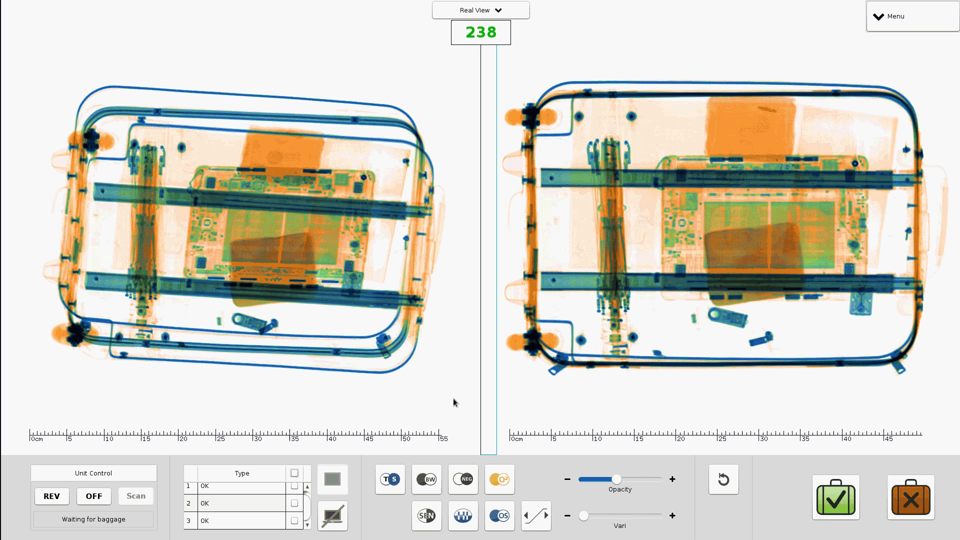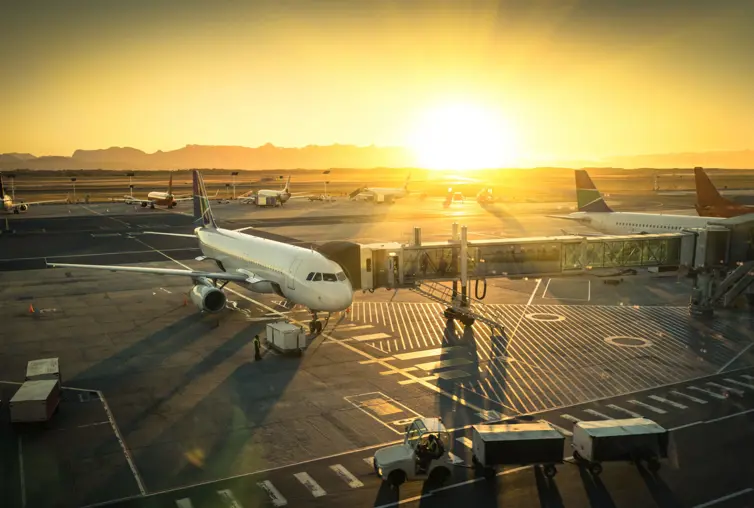Airports are often seen not only as gateways to but as jewels of the cities they connect. They can also be a lucrative window to attract business to countries and high-ranking cities. The more high-tech and passenger-friendly they become, the more likely they will positively impact local finances. Airports are therefore the ideal testbed to integrate new technologies in order to benefit from global growth in passenger traffic and to attract further direct or indirect investment.
Airports remain a strong location investment and are becoming hubs for innovation. Universal exhibitions, sporting events and the increasing movement of people all provide good opportunities to modernise airport infrastructure and to adopt technologies that can improve the passenger experience.
In this insight, we have identified several top trends for airports and aviation in 2020 & beyond.
1. Robotic assistants
Robots could be first in line to help passengers in busy and confusing environments like airports (for example, Troikas check-in robots by LG have been deployed in Incheon Airport, South Korea), and to improve the ride to the airport (Gatwick airport in the UK is willing to initiate a pilot robotic car park project in 2019).
2. Passenger-centric solutions
Less futuristic and more tangible, the adoption of 5G networks has started in some airports (e.g. Manchester), highlighting the way airports are adapting to meet actual passenger demands. Airports and airlines are changing their decision-making processes from product-centric to passenger-centric. Products and processes are evolving to adapt to changes in passengers’ travel preferences and their access to technology. Airports are adopting technologies that can help expedite the passenger’s transactional activities such as check-in, baggage screening, security and customs. In turn, the positive travel experience is leading to an increase in non-aeronautical revenues for airports and their stakeholders.
3. Liquids are ready for take-off
Removing electronic devices, liquids and gels from hand luggage is listed amongst the top three “pain points” of passengers when travelling by air. Technology will soon rescue passengers from this hassle. Leading screening and detection providers are leveraging technical advances in computed tomography scanners (CT scanners) to screen luggage in a better way, without the need to remove the usual suspects from the bag. The use of artificial intelligence in airports via AI-powered scanners that are able to distinguish explosives and weapons from non-dangerous items (such as belts and keys) is also being tested in the US, helping operators make better decisions and streamline the security screening process.
Faster passenger flows and security checks have a positive impact on the overall passenger experience in the airport and the running of flight operations, with a direct financial benefit to every stakeholder. Smiths Detection is among the pioneers in new CT developments with solutions such as the HI-SCAN 6040 CTiX and iCMORE automatic object recognition.

4. Paperless and trustworthy, here comes the blockchain
Moving beyond its traditional role in the fintech sector, blockchain technology is being explored by airlines, airports and government authorities as a way to improve safety and aviation security operations. Potential applications for this technology include recording and storing bookings, aircraft parts census and spares tracking. Blockchain transparency and immutability are also believed to be potential key assets in efficiently dealing with an ever-growing passenger flow – notably for passport and visa controls – eventually putting an end to manual verification.
5. Biometrics
In 2019, the biometric realm in airports is becoming a reality, heralding a future of artificial intelligence in aviation. There have multiple trials of face-recognition technology and early adoption has started in airports from Narita to Athens and from London to NYC and the main Chinese cities. Alternative approaches using palm-vein identification (South Korea) are also part of this trend. The principal objective is to decongest security lines and controls, putting the key functionalities at the boarding gates. Less manned work is required, which expedites boarding processes and leads to shorter queues – these are the key elements pushing airports to invest in these new technologies.
Biometric technologies offer substantial opportunities for key players to build strong business cases for further adoption. They are also a key enabler for risk based screening approaches.
6. Secure by design
Continued growth in passenger traffic and the ‘Amazon effect’ on logistics is driving the adoption of more autonomous aviation solutions based on artificial intelligence, enhancing airport security-screening operations. Increasing reliance on seamless security processes at airports and the digitisation of traveller authorisations is susceptible to high-impact incidents (affecting security and business continuity) if the networks hosting these digitised solutions were to be breached.
Aviation and airport security solutions providers are partnering with leading IT companies to develop secure products and solutions at the design stage.
7. Up in the cloud
The “cloudification” of business processes to streamline efficiencies, reduce upfront capital investments and offer elasticity to adapt to passenger flows (seasonal airports, passenger demand because of special events such as Olympic Games, New Year, pilgrimages, etc) is increasingly being considered by airports and airline companies. Modernising legacy IT infrastructures is one of the main drivers, closely followed by private investors taking ownership of public airports and looking to generate revenues more quickly with minimal investments. More specific applications are also expected to become cloud-hosted, such as control rooms to improve efficiencies in communications and coordination.
Leading cloud service providers are aligning themselves to industry needs, but aviation specialists are essential for partnerships because a genuine understanding of airports’ operating environment is required. Migrating to the cloud is also a complex task and any negative impact (delays, cost overruns, etc) on the continuity of operations would be damaging.
8. The unknown-unmanned threat
Managing operational disruptions that impact business continuity and revenue generation is a key focus for both airports and airlines. With the adoption of new technologies, stakeholders have improved their responses to such disruptions. However, the rapid evolution and penetration of off-the-shelf unmanned technologies, such as drones, is posing a significant challenge. The remote nature of the disruption makes the perpetrator ‘unknown’, adding to the complexity of the threat.
Airports across the world are investing in counter-UAS [unidentified aerial systems] technologies that cause minimal flight disruption and they are expected to invest more heavily in the future. Suppliers are leveraging experience and expertise traditionally associated with the defence sector to create tailored solutions for the aviation industry.
9. Improving air-traffic control
Traffic growth is pushing air-traffic control infrastructure and capacity further towards their limits and is becoming a big challenge in an incredibly congested airspace, reinforced by the technical complexity of integrating unmanned aircraft systems into civilian airspace.
Digitalising air-traffic control is a developing trend to improve transport safety and is aligned with airports’ aim of running flight operations on time and improving passenger throughput. The adoption of remote-control centres to efficiently manage various airports’ traffic has emerged recently.
This approach generates strong investment opportunities for well-established players and the redesign of the future management of airspace control.
10. Destination green
Aircraft are becoming greener, with biofuels being tested, lighter airframe components and trials taking place on the ground to reduce the carbon footprint when craft are taxiing. Encouraging results are leading to further experiments, albeit with heavy costs. Low fuel prices have for some time discouraged green investments in aviation, but low dollar-priced oil will not last forever. Experts predict a near-term price increase that will eventually have an impact on travel fares. In the meantime, additional carbon-footprint taxes are in consideration.
Continually reducing aircraft fuel consumption is a big challenge that is being taken seriously by aircraft OEMs. However, current aircraft designs are no longer able to integrate new power and flight systems. Rethinking aircraft design and airframes (especially with open-rotors technology) are part of a greener tomorrow. At the same time, airports are considering how they can reduce their ecological footprint, by reducing waste and improving efficiencies through technology.

